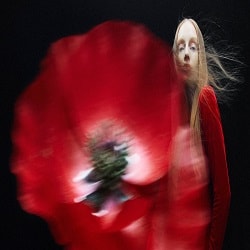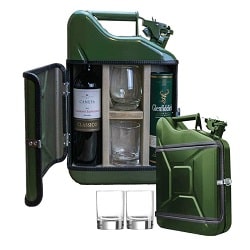Saint Kilian is happy….
A new star is born Ernie – Ernst J. Scheiner, The Gateway to Distilleries at www.whisky-distilleries.net
Saint Kilian celebrated his birthday again. Distillery Manager Mario Rudolf and his team presented their first three-year-old single malt whisky which they had distilled in Rüdenau in Lower Franconia in May 2019. Hundreds of friends and retailers joined the big party.
They celebrated the inauguration of Sankt Kilian Signature Edition One. The brand new German single malt whisky appeared in shining amber colours in a specially designed bottle which interpreted the shape and proportions of its pot still where the spirit had been distilled. The elegant and much acclaimed designer bottle was filled with a young whisky at 45% abv in natural colour. The three year old Sankt Kilian German Single Malt was double-distilled from 100 % German malted barley. „The first edition is not chill-filtered in order to preserve its full aroma and taste for the connoisseurs,“ Mario Rudolf pointed out. The Frank was born in the nearby town of Amorbach, which has strong family-links with Queen Victoria’s mother Victoire of Sachsen-Coburg-Saalfeld.
“It is an incredibly good feeling standing here, three years after we filled the first cask with our whisky which is a result of experimenting with different types of casks and wood.” The newly born whisky was the achievement of a dedicated dynamic young team. Special distillation methods in a state of the art distillery of the finest quality led to spirits which matured in a great variety of different casks on site. Today Sankt Kilian is the largest whisky distillery in Germany and produces about 210 000 LPA. Four Signature Editions have been released so far plus innumerous special casks bottlings.

The beginnings
The fancy idea had started in Ireland. The friendship between the investor and whisky collector Andreas Thümmler, who is also from the Lower Franconia, and the experienced Irish distiller and developer David F. Hynes formed the foundation of a groundbreaking cooperation. The former managing director of Cooley had been responsible for the brilliant development of world-renowned whiskeys like Tyrconnell, Connemara, Greenore or Kilbeggan. The oldest Irish working distillery Kilbeggan got the two whisky specialists together. Thümmler’s idea to build a Scottish type of distillery in the hills of his home village near the Main River Valley was a splendid one indeed. Today tourists are flocking in visiting the new attraction near the medieval trading centre of Miltenberg. The aromatic result of an oily, almost creamy fruity, apple and pear-scented spirit without pungent alcohols is also sweet and malty on the palate. Thümmler’s huge investment decision is rewarded by the high quality of the whisky and its positive reception by customers and critics. The distillery site was indeed the perfect choice. Since Roman times the area has been known for the exeptional quality of its water sources. A disused textile factory provided the ideal production and warehousing site.
A state-of-the-art distillery emerges
The Irishman David Hynes designed the structure and size of the pot stills, the lauter tun – 12,000 litres – and the four wooden fermenting vats – 10,800 litres each. The world-famous coppersmiths of Forsyths from Rothes in Speyside manufactured two copper stills each having a capacity of 6,000 litres. Coopers from Dufftown in Speyside set up the wooden fermenters according to traditional Scottish patterns. The pine wood came from the American state of Oregon at the Pacific coast. The system of a temperature-controlled fermentation of the wort is a reminiscence of Irish tradition. By installing large cooling plates inside the wooden washbacks the mashmen are able to ferment various kinds of beers for distillation. Pitching the yeast starts normally at 28 degrees Celsius. Fermentation ends usually after 65 hours. At weekends it is longer of course. Dried yeast from Lallemand is the standard. The beer with a concentration of 8% abv is very fruity and only double distilled into water and alcohol in onion-shaped stills.
Pot stills under bond
German customs authorities require special modifications for this type of grain distillery. The spirit still is placed completely sealed behind framed glass walls. All screws of the metal frames and doors were even individually sealed by the officers. Free access to the pot still kettels is hermetically denied by a completely locked steel and sealed door. Stillmen are kept out totally, any access is fully denied. They are only allowed to open the doors in case of justified emergency. Only officials of the tax and revenue office have the legal right to break the seals for inspection. Nobody can trace any alcohol from the distilling line unless the seals will be taken off. Even the top flange of the lyne arm of the wash still is hermetically sealed. Well before distilling the distiller has to notify the very day and time to the regional revenue office. During the first months memebers of the revenue office controlled all distilling procedures. Officers have got the legal right of free access to any spot of the production premises and bonded warehouses at any time without prior appointment. They do control all steps of production and check the bonded warehouses.
When distilling Mario Rudolf and his colleagues are only able to control the aroma profil of the destillate after it has run through a completely sealed alcohol gauge meter. They may take only a very small sample at a special tap positioned just outside of the spirit safe which is also behind sealed glass frames. Any of these samples will also be taxed in the end. However, the Scottish-like pot still distillation system of St. Kilian has got a very special technical feature which reflects Irish distilling tradition: Hynes installed a dephlegmator or reflux condenser with spirial water pipes in the voluminous and slightly ascending lyne arm of the spirit still. Thus the stillman is able to control the particular temperature and amount of cooling water of the reflux condenser. By varying temperatures he might increase or decrease the reflux of the ascending heavy alcohol vapours back into the kettle. The distillate gets either purer or heavier during these monitored reflux phases. This versatile purification method of the destillates is resulting in a new make which is almost free of sulphurous aromas. Hynes: “We are approaching a two and a half times distillation and above, if you like.” A typical tripple Irish distillation has not been intended at Sankt Kilian Distillery so far. The graduate chemist from the University of Dublin had already installed a similar system at Cooley Distillery in Riverstown, Co Louth. There he fixed a serpent water pipe in the ascending lyne arm of the spirit still. Almost the same kind of purifying system was also implemented at the new Great Northern Distillery in Dundalk north of Dublin, where Hynes is one of the directors alongside Dr John Teeling. At the former Harp Brewery he also modified the spirit stills. Hynes installed circular cooling pipes in the horizontal lyne arm. The reflux of heavy alcohols run directly through an additional copper pipe into the former brew kettle, where once brewers used to boil Harp Lager beer.
The result is a spirit full of fruity aromas
The Sankt Kilian new make reaches the spirit safe at an alcohol level of 70 to 75% abv. Like Scottish stillmen the Kilian Team recycles foreshots and feints within the low wines mixture. Although it is quite common by German distillers – mainly fruit distillers – not to rediststil the foreshots and feints. They only use the pure middle cut for maturation, the heads and tails are waste. In contrast to the Scottish Regulations, which only allow oak barrels for whisky maturation, the European Union legalizes the use of casks in Germany which are made of all kinds of wood. Rudolf matures his Kilian whisky in about 180 different small and large cask types of red and white wines such as Amarone or sweet wines like Sauternes or Tokay. In the onsite-bonded warehouses and in very unique former U.S. bunkers nearby you may spot casks which held Caribbean rum, Andalusian Pedro Ximénez, Oloroso, Moscatel, Bourbon, cider or beer etc. Juvenile casks may also shape the aroma profile of the Kilian whiskies. Mario Rudolf is very keen on experiments. Though the wood management is highly diversified. He even traced very old Sherry toneles from Sanlúcar de Barrameda and Pedro Ximénez seasoned casks from Montilla. He is now setting up long term relationships with bodegas and tonelerias in Montilla and Jerez. Like in Scotland, the new make is reduced to 63.5% abv before filling the casks. Since the start of production on Saint Patricks Day 2016, the spirits have been maturing in around 5000 barrels on the distillation site. Among them are now also distillates from beech-wood smoked Franconian malt and Scottish peated malt from Paul’s Malt in Glenesk, south of Aberdeen.
PART TWO WILL BE PUBLISHED ON APRIL 12th, 2020
Text and Photos remain Copyright The Gateway to Distilleries 2019










